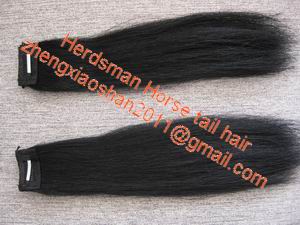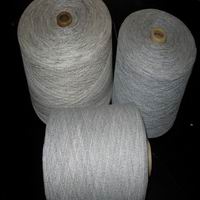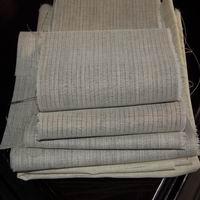Zebra Hybrids
Zebras may appear to have ponyish bodies, but the hip shape does differ as well. Zebras ears are larger and rounder than horse ears. The Mountain zebras have almost donkey-like ears, while the Grevys zebra sports a huge flared conical ear. The necks are characteristically straighter in the longears, and most donkeys and all zebras lack a true wither. The manes are stiff and upright, and zebras, like donkeys, have no forelocks. Zebras have variety of noises, most commonly the qua-ha or barking sound. These traits are all passed along, in part, just as they are in Mules, to zebra Hybrid offspring. Most Zebrasses (Zebra X Donkey crosses) look just like donkeys with zebras striping on the colored coat.
Zebra hybrid is an all-encompassing term for a zebra crossed on any other equine. The term Zorse is to used to describe the cross of a zebras stallion to a horse mare. Other terms seen are Zebroid, Zony (zebra x Pony) or Zeony. Zebra -donkey crosses are termed Zebroid, Zebrass, or Ze-donk. A more romantic (but not technically accurate) term that has recently suced is Golden Zebra, used for any zebra hybrid. The once popular term Zebra mule is no longer used either.
Zebra stallions are used primarily for zebra Hybrid breeding. Zebra mares are needed for the production of purebred zebras. The rare Zebra hinny has been seen, but zebra stallions that are hand-raised (as opposed to nursed by his zebra mother) with horses or donkeys are much easier to use in Zebroid production.
Zebras lack withers, and saddles are difficult to fit to the animals. The hybrids are shaped more like the non-zebra parent, and also usually have better personalities. This makes them the more ideal candidates for working animals. As more breeders are crossing zebra stallions to a variety of good mares, it is hoped that someday there will be classes of striped Zebra hybrids in the showring to compliment the spotted and patched mule and donkey Color classes.
Zebra hybrids, depending on the parents,horse forelocks will be either more horselike or more ass-like in body shape. They also are typically smaller than most horses or mules. Most zebra breeds are small, even the largest variety, horse hair tassels the Grevys, is only about 13 hands high. Zebroids can be bred larger by using tall, well-bred mares of all saddle types. Stock mares are very popular for producing saddle and harness zebroids.
(please remember to send your full postal mailing address if you request this packet by
Zebra hybrids are growing in popularity. Although the zebra is a true wild animal, if carefully raised around domestic equines from a very young age, even pure zebras can be used under saddle, as pack animals, or in harness. Few breeders will use zebras this way, instead concentrating on the colorful zebroid offspring.
There are several variations of the striping patterns in the zebra, from the broad sweeping flank stripes of the Grants to the shadow stripes of the Damarland, to the numerous narrow body striped and white belly of the Grevys. These three varieties of zebra are the most commonly seen in zebraZebra Hybrids hybrid breeding. However, it seems that no matter the exact pattern of the zebra sire, many zebroids may actually have more stripes over the hips and back than the parents. Typically a zebra hybrid will have boldly striped legs, a clearly marked dorsal stripe, and varying degrees of striping on the ce, neck, shoulders and body. The stripes are dark brown or black against coats of all horse colors, or may even appear red on chestnut or sorrel coats. Pinto mares may throw zebra hybrid foals with pinto coats, where the dark stripes are overlaid on the dark areas. Care should be taken in breeding roans or grays for hybrids, as these colors could obscure the stiping patterns as the white hairs progress.
Please do your research on Zebra Hybrids before you consider buying a zebra hybrid!












